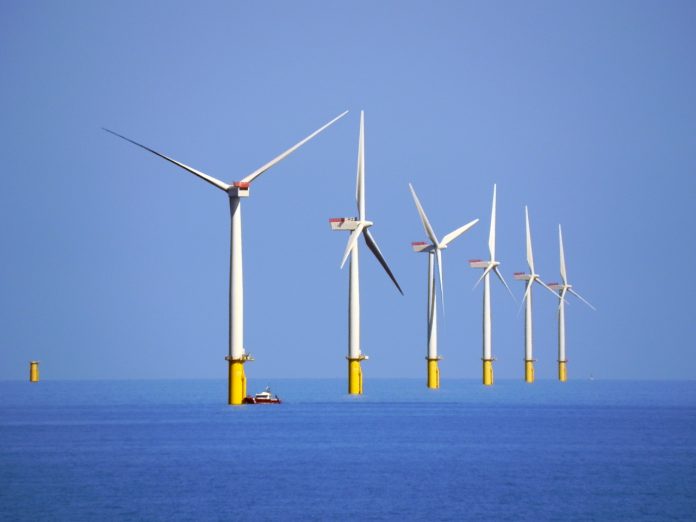By David Wojick
New evidence says that offshore wind sonar surveys may have committed hundreds of thousands of violations of the Marine Mammal Protection Act (MMPA), each potentially subject to tens of thousands of dollars in fines. The potential penalty total is in the billions. Moreover these incredible violations appear to be deliberate.
These astonishingly bad findings flow from research by the Save the Right Whales Coalition (SRWC). It is a bit technical but here is a simple summary.
First some legal background. We are talking about the activity of sonar blasting doing something called “incidental harassment”. In the MMPA harassment means doing bad things to a marine mammal. These can range from causing adverse behavioral changes to outright injury, such as in this case causing deafness. Incidental means the harassment is due to some activity that is not directed at the mammal, in this case the many sonar surveys done in conjunction with offshore wind development.
One of the fundamental rules in the MMPA is that incidental harassment is illegal unless it has been specifically authorized by NOAA. The extreme noise from offshore wind sonar surveys does a lot of incidental harassment so NOAA has issued an Incidental Harassment Authorization (IHA) for each one. Since sonar blasting geared up in 2016 NOAA has issued over 40 IHAs with more pending.
Each IHA lists the number of authorized harassments by species of affected mammal. How this is done is very important here. In simple terms it is like this. NOAA has established noise level thresholds, above which there is harassment. Given the loudness of the sonar the size of the ocean area where harassment will occur is then determined. Then the number of critters of each affected species that will be in that area, hence harassed, is estimated. That number of harassments is then authorized so the survey can proceed.
These IHA numbers are big. It is not unusual for 5,000 to 10,000 harassments to be authorized in a single IHA. Most of these are typically dolphins and seals, with dozens of whales as well. All the IHAs, effective, expired and pending, are listed here.
These MMPA authorized harassments are an issue because they can cause deadly behavior, such as driving the critter into heavy ship traffic to be struck. But that is not our topic here as we now have something potentially far worse to consider.
Save Right Whales Coalition (SRWC) blows the whistle
SRWC noticed that the recent IHA calculations were using sonar noise levels that were much lower than those specified by the equipment manufacturer. So they did what NOAA should have been doing from the beginning; they measured the noise from a sonar in action doing a survey. They found that the noise level was comparable to the manufacturer’s specs, hence much louder than what the IHA assumed.
Here is how SRWC co-founder Lisa Linowes explained it to me (somewhat technically):
“Thirteen of the 13 IHAs now active for OSW sonar activity show all of the applications were approved based on a sonar level with a source sound level of 211 dB,pk and 203 dB,rms. Had the developers used the correct sound levels using manufacturer’s data of 226 dB,pk and 219 dB,rms (per NOAA’s own guidance), NOAA’s spreadsheet for determining Level B threshold for impulsive sound levels would be 890 meters from the survey boat. But instead, the quieter sonar value submitted to NOAA placed the threshold distance at just 141 meters and that’s what NOAA approved. Using the same calculation for impact area that the developers used but applying the 890 meter radius results in an area that is significantly larger.”
For more see this website, here.
If the local population scales with area, which seems likely, then the number of harassments will be about 6.3 times higher than authorized. That is 890 divided by 141. For simplicity call it 6 times higher.
Thus the number of unauthorized harassments will be roughly 5 times higher than the number authorized. All of these unauthorized harassments are illegal violations of the MMPA. The number of violations is huge. Note that these low-ball numbers come from the offshore developer not NOAA. The harassment calculations are in the developer’s application.
We know where these low-ball numbers come from. NOAA’s IHA guidance says that if the manufacturer’s data is not available then the applicant can use a proxy number from a 2016 technical publication. Despite the manufacturer’s specs being readily available, all the applicants used some of the lowest proxy numbers. Why NOAA approved this substitution is not known.
Staggering potential penalties for illegal harassment
The potential penalties for unauthorized harassment are sizable. Here is NOAA’s summary:
“If prosecuted, violators of the MMPA could face:
— Civil penalties up to $34,457.
— Up to 1 year in prison, plus criminal fines.
— Forfeiture of the vessel involved, including penalties for that vessel up to $25,000.”
See the link here.
I have seen reports that to date NOAA has authorized over 400,000 offshore wind sonar harassments. If all of these use the low-ball loudness and given our 5 times ratio this implies an incredible 2 million unauthorized harassments or more. At $34,457 per harassment the civil penalties alone work out to just under 69 billion dollars! Not to mention the jail time and criminal fines.
This astonishing 69 billion dollars in potential penalties shows the staggering scale of this issue of unauthorized harassment by offshore wind sonar.
Clearly a thorough investigation is called for. In the meantime this illegal harassment must cease. Active IHAs should be suspended and no more issued until this issue is resolved.
David Wojick, Ph.D. is an independent analyst working at the intersection of science, technology and policy. For origins see http://www.stemed.info/engineer_tackles_confusion.html For over 100 prior articles for CFACT see http://www.cfact.org/author/david-wojick-ph-d/ Available for confidential research and consulting.
Originally published by the Committee For A Constructive Tomorrow (CFACT), reposted with permission.
To read more about the threat of offshore wind to threatened whales, click here.


























